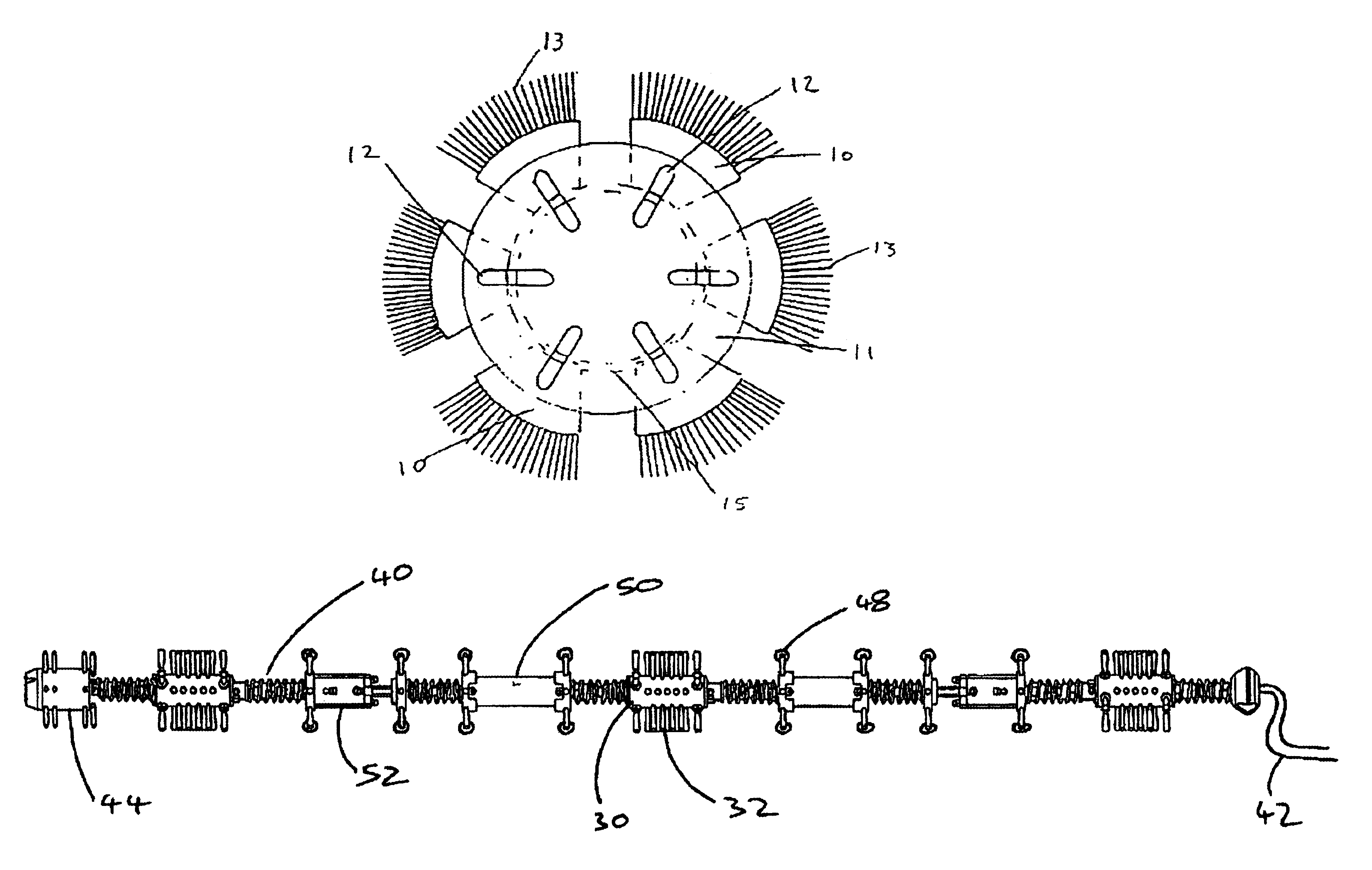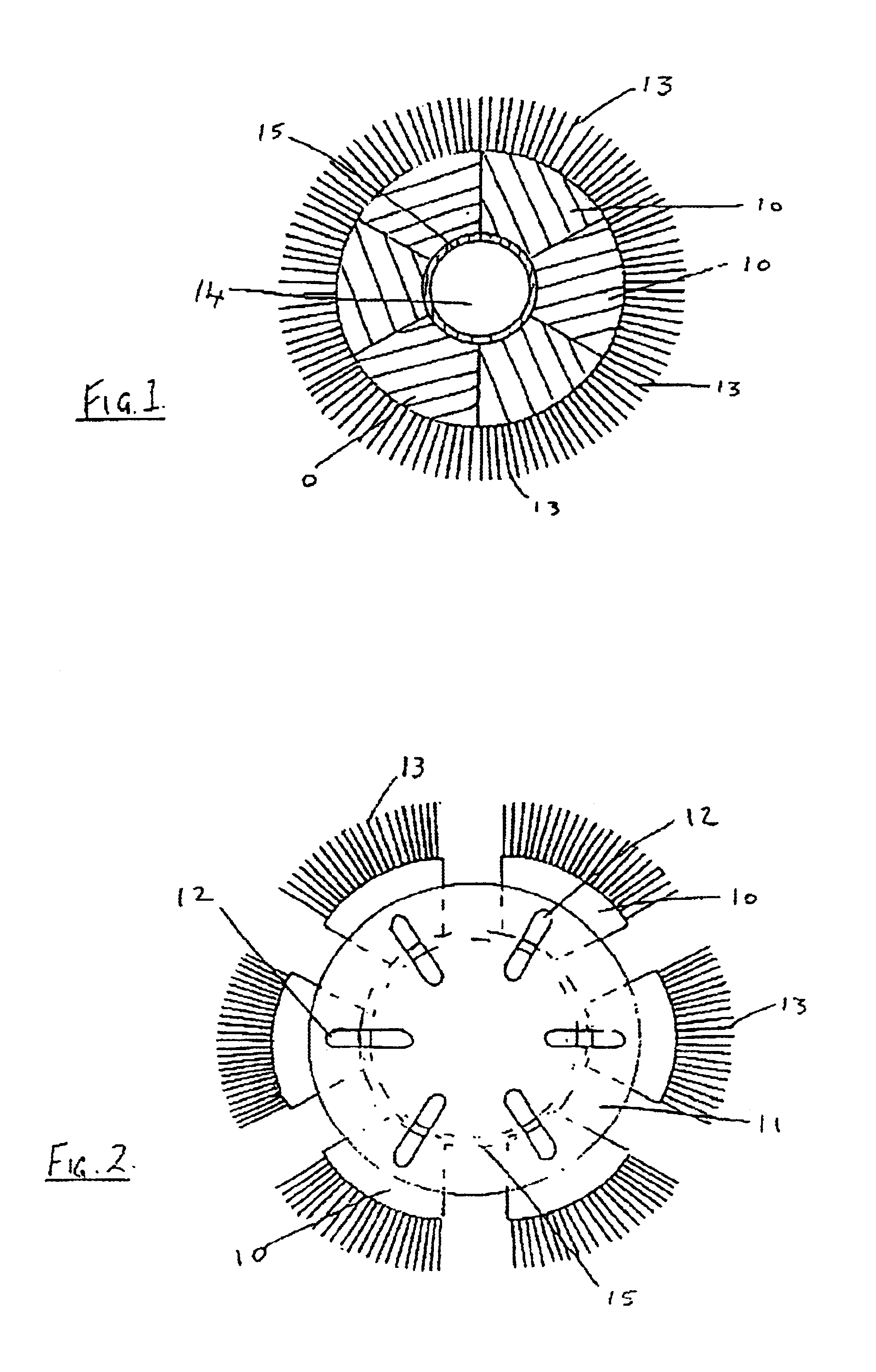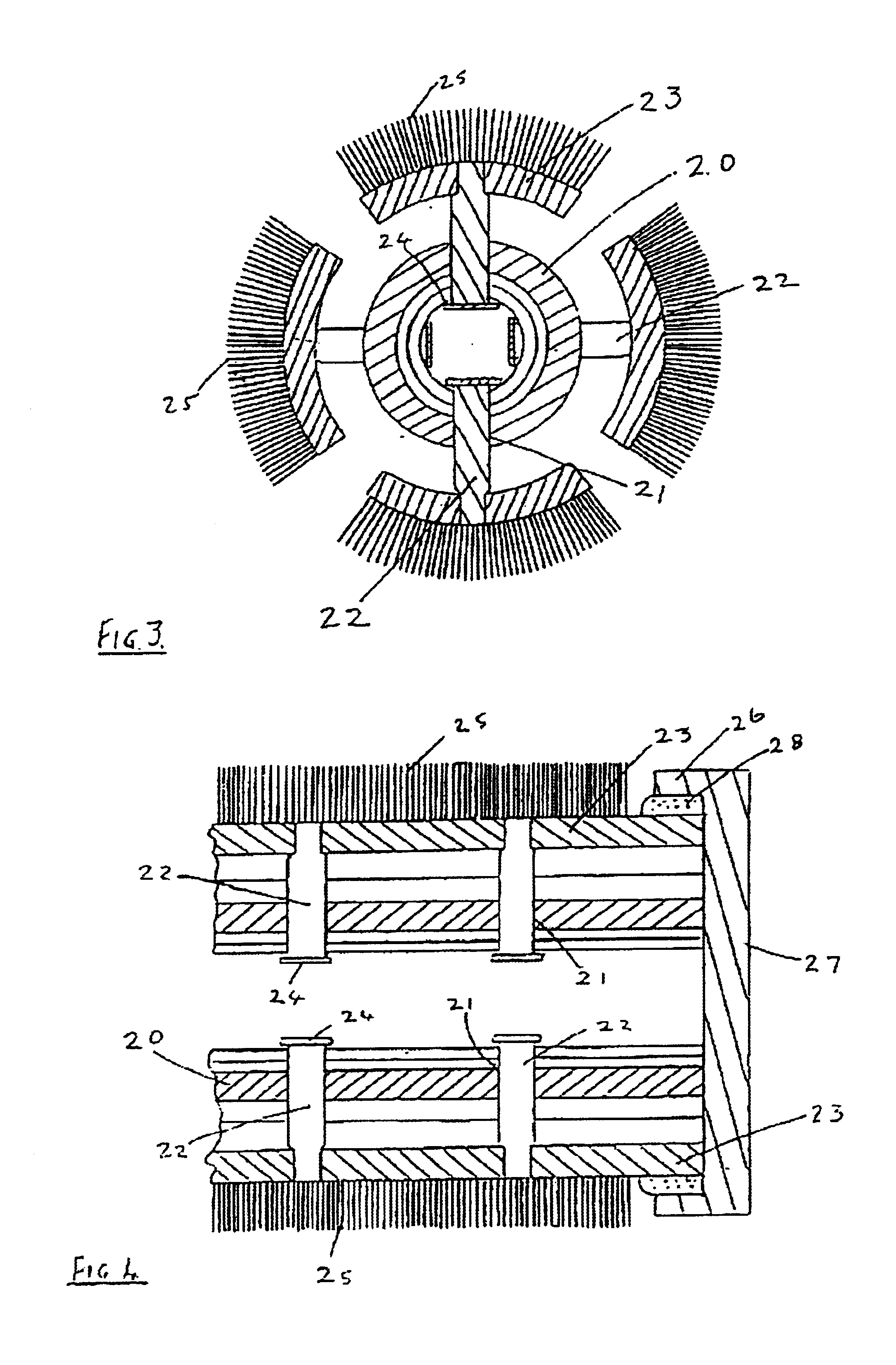Surface-traversing vehicle
a surface-traversing vehicle and surface-traversing technology, which is applied in the direction of mechanical equipment, cleaning of hollow objects, and cleaning of boreholes/wells. it can solve the problems of preventing the continuation of satisfactory mechanical operations, affecting the satisfactory provision of retractable bristles, and affecting the operation of mechanically-operated systems
- Summary
- Abstract
- Description
- Claims
- Application Information
AI Technical Summary
Benefits of technology
Problems solved by technology
Method used
Image
Examples
Embodiment Construction
The body illustrated in FIGS. 1 and 2 is of cylindrical form and is constructed from six bristle-carrying members 10, each forming one sector of the cross-section of the cylinder. The members 10 are shown as solid but may be of a more open construction in order to limit their weight. The members 10 are mounted together between disc-shaped end-plates 11 and each member engages a guide slot 12 at each of its ends, which guide slots permit the members 10 to move by a limited amount radially outwardly relative to the axis of the body. Each of the members 10 carries a large number of bristles 13 distributed throughout the length of its outer curved surface.
Located within a central bore 14 and extending throughout the length of that bore is a generally cylindrical, tubular bag-shaped membrane 15, made of a stretchable rubber material. The membrane 15 may be expanded by the introduction of air under pressure into the interior of the tubular membrane and, in expanding, it drives the bristle...
PUM
 Login to View More
Login to View More Abstract
Description
Claims
Application Information
 Login to View More
Login to View More - R&D
- Intellectual Property
- Life Sciences
- Materials
- Tech Scout
- Unparalleled Data Quality
- Higher Quality Content
- 60% Fewer Hallucinations
Browse by: Latest US Patents, China's latest patents, Technical Efficacy Thesaurus, Application Domain, Technology Topic, Popular Technical Reports.
© 2025 PatSnap. All rights reserved.Legal|Privacy policy|Modern Slavery Act Transparency Statement|Sitemap|About US| Contact US: help@patsnap.com



